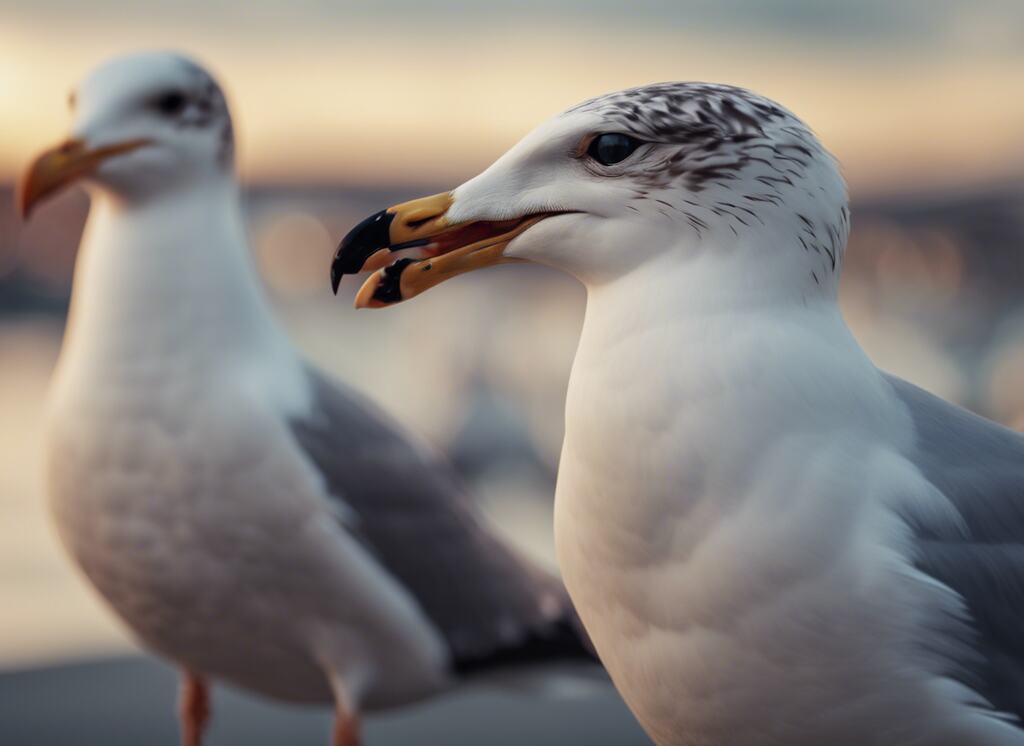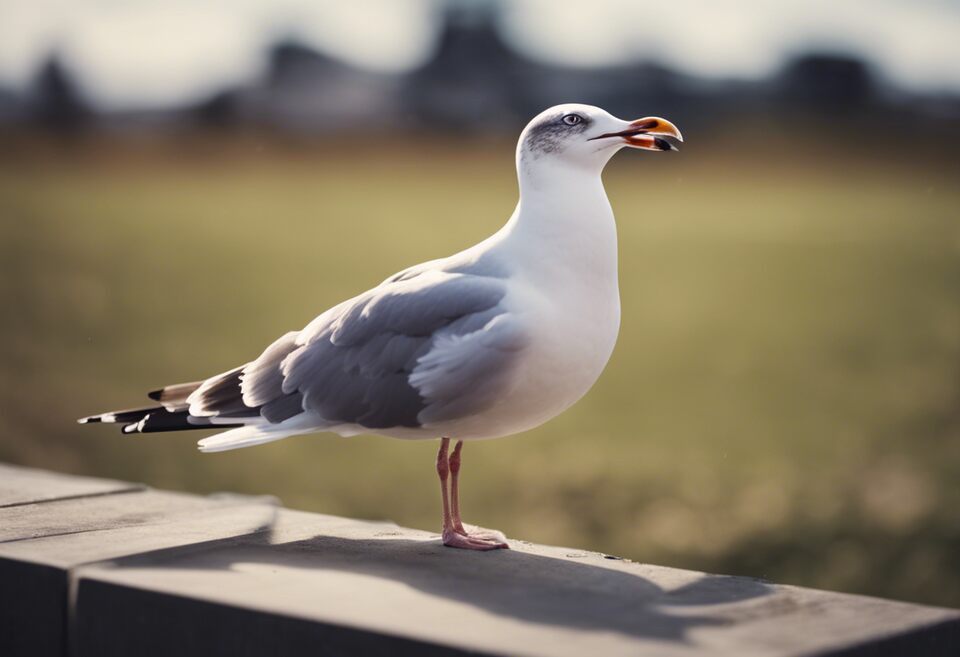Seagulls are commonly found near coastlines, lakes, and rivers, soaring gracefully through the air or perched on piers. These birds are known for their distinct calls, scavenging behavior, and often being portrayed in seaside settings. One question that may arise when observing seagulls is whether they possess teeth.
Table of Contents
Do Seagulls Have Teeth
Understanding Seagulls’ Anatomy
Seagulls are part of a group of birds known as seabirds, which have adapted to coastal environments with distinctive features aiding their survival. Unlike mammals, seagulls do not have teeth. Instead, they possess sharp, pointed beaks with serrations along the edges, which are perfectly suited for catching and consuming their prey.
The Function of Seagulls’ Beaks
Seagulls rely on their beaks to hunt for food. Their beaks are designed to be strong and efficient, allowing them to capture a variety of prey, including fish, crustaceans, insects, and even smaller birds. The shape of the beak can vary between different species of seagulls, with some having longer, more curved beaks for probing in the sand or mud, while others have shorter, stouter beaks for more forceful pecking.
How Seagulls Eat Without Teeth
Despite the absence of traditional teeth, seagulls are adept at consuming their food. When a seagull catches its prey, it uses its beak to grasp and manipulate the food. Seagulls are opportunistic feeders, meaning they will consume a wide range of items depending on what is available. Their diet is diverse and can include everything from fish and garbage to insects and small mammals.
Adaptations for Feeding
In addition to their beaks, seagulls have other adaptations that aid in feeding. For example, seagulls have a specialized digestive system that allows them to break down and extract nutrients from a variety of foods. Their digestive tract is designed to handle different types of prey, from the hard shells of crustaceans to the soft bodies of fish.
Behavioral Traits of Seagulls
Seagulls are known for their intelligence and resourcefulness. These birds are excellent problem solvers and are constantly on the lookout for food sources. Seagulls have been observed using a variety of techniques to obtain food, from stealing from other birds to scavenging for scraps in urban areas. Their adaptability and willingness to try new foods contribute to their overall success as a species.
While seagulls do not have teeth in the traditional sense, they have evolved specialized adaptations, such as their sharp beaks and efficient digestive systems, to thrive in their coastal habitats. These birds play a vital role in the ecosystem and are fascinating creatures to observe in the wild. The next time you see a seagull soaring overhead or perched on a dock, take a moment to appreciate the unique characteristics that make them well-suited to their coastal lifestyle.
The Dietary Habits of Seagulls: An In-Depth Exploration
Seagulls, popularly known for their presence near coastlines and their distinctive squawks, are fascinating creatures. One common question that arises when observing seagulls is whether they have teeth. Let’s delve into the dietary habits of seagulls to uncover this mystery and gain a better understanding of these coastal birds.
The Anatomy of Seagulls
Seagulls belong to the Laridae family and are known for their sharp beaks and webbed feet. They have a specialized beak that is adapted for catching and consuming a variety of foods. While their beaks may appear sharp and pointed, seagulls do not have teeth in the traditional sense. Instead of teeth, seagulls have serrations along the edge of their beaks, which help them grip and tear apart their food.
The Dietary Habits of Seagulls
Seagulls are opportunistic feeders and are known to have a diverse diet. Their feeding habits can vary depending on their habitat and food availability. Seagulls are scavengers by nature and often feed on fish, insects, crustaceans, and small marine organisms. They are also known to steal food from other seabirds and even scavenge for scraps in urban areas.
Feeding Behavior
When it comes to feeding, seagulls use their sharp beaks to catch and swallow their prey whole or tear it into smaller pieces. The serrations on the edge of their beaks help them grip onto slippery prey items such as fish. Seagulls are also known to drop hard-shelled prey such as clams and mussels onto rocks from a height to break them open and access the soft flesh inside.
Adaptations for Feeding
While seagulls do not have teeth, they have developed various adaptations to aid in their feeding habits. In addition to the serrations on their beaks, seagulls also have specialized tongues that help them manipulate and swallow their food. Their digestive systems are designed to process a wide range of food types, allowing them to thrive in different environments.
Impact of Diet on Behavior
The diet of seagulls plays a significant role in shaping their behavior and interactions with other species. Competition for food sources can lead to aggressive behavior among seagulls, especially during the breeding season when resources are limited. Understanding the dietary habits of seagulls is essential for conserving their populations and ensuring the health of coastal ecosystems.
While seagulls do not have teeth, they have evolved various adaptations that enable them to effectively capture and consume a diverse range of foods. Their unique beaks and feeding behaviors make them well-suited for life along coastlines and in marine environments. By studying the dietary habits of seagulls, we can gain valuable insights into the ecological roles they play and the importance of preserving their habitats.
Conclusion
Seagulls are fascinating creatures that have adapted well to their coastal habitats. While they do not have teeth in the traditional sense, seagulls possess unique adaptations that allow them to consume a wide range of food items. Their beak serves multiple purposes, including capturing and consuming prey, as well as foraging for various types of food sources.
Understanding the dietary habits of seagulls provides valuable insights into their behavior and ecosystem dynamics. From scavenging for scraps in urban settings to hunting for fish along the shoreline, seagulls are opportunistic feeders that play a crucial role in marine and coastal ecosystems. By consuming a diverse array of foods, seagulls help regulate local populations of prey species and contribute to the overall health of coastal environments.
While seagulls are commonly associated with stealing food from beachgoers or scavenging for leftovers in coastal towns, their diet is much more varied and complex than often perceived. These birds are highly adaptable and have been known to consume insects, mollusks, small mammals, and even other birds. By exploring the dietary habits of seagulls, we gain a deeper appreciation for the role they play in maintaining ecosystem balance.
Seagulls do not have teeth, but their beak structure allows them to effectively capture, manipulate, and consume a wide range of food items. Their dietary habits are diverse and encompass a variety of sources, highlighting their versatility as opportunistic feeders. By studying seagulls’ feeding behaviors, we enhance our understanding of these coastal birds and their significance in marine ecosystems.
Next time you encounter a seagull at the beach, take a moment to appreciate the complexity of their dietary preferences and the vital role they play in coastal environments.



